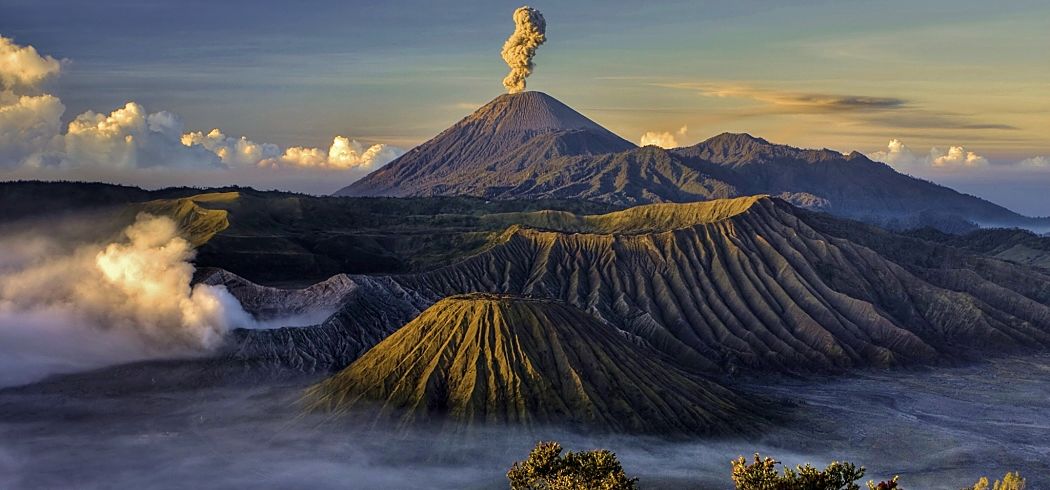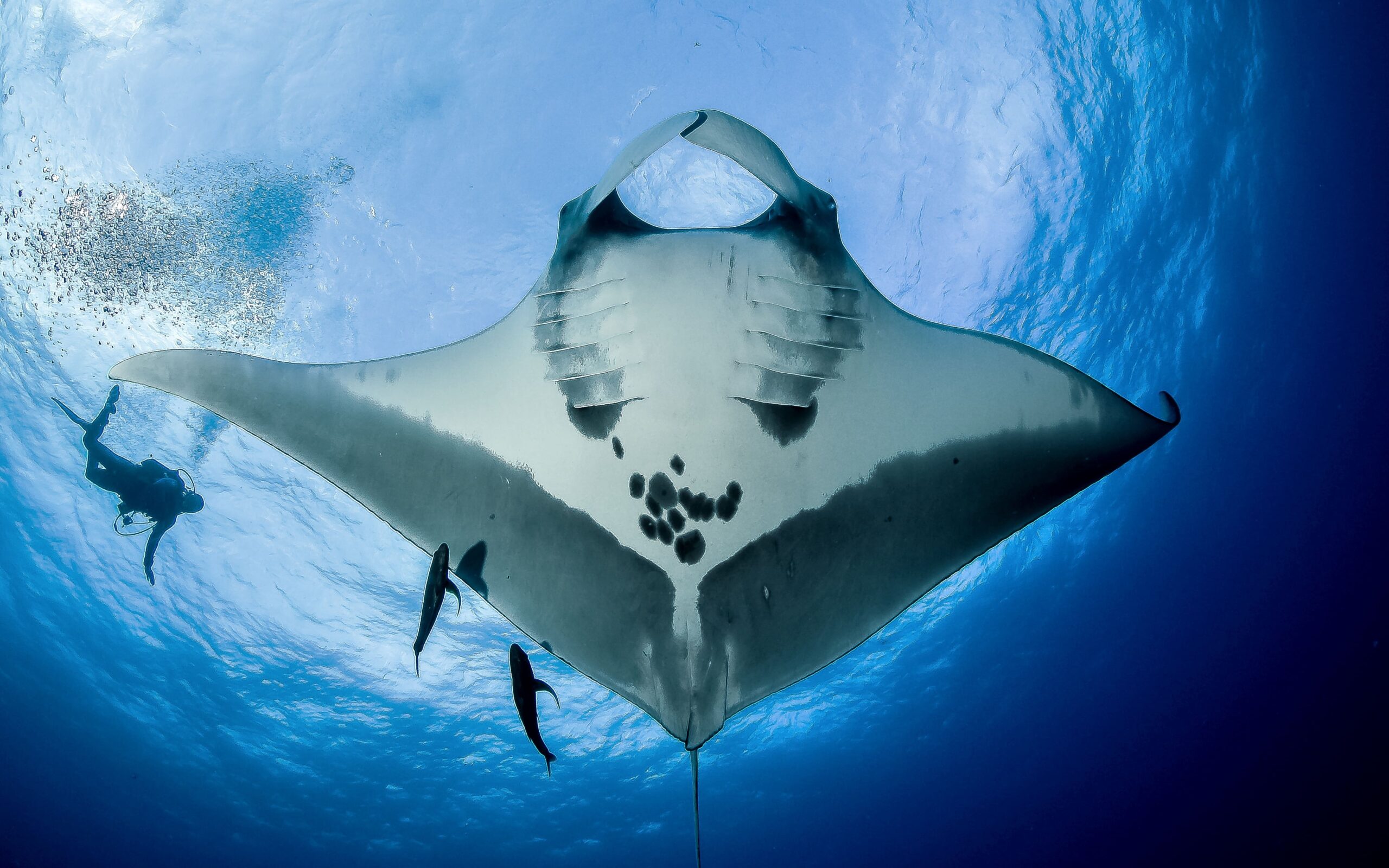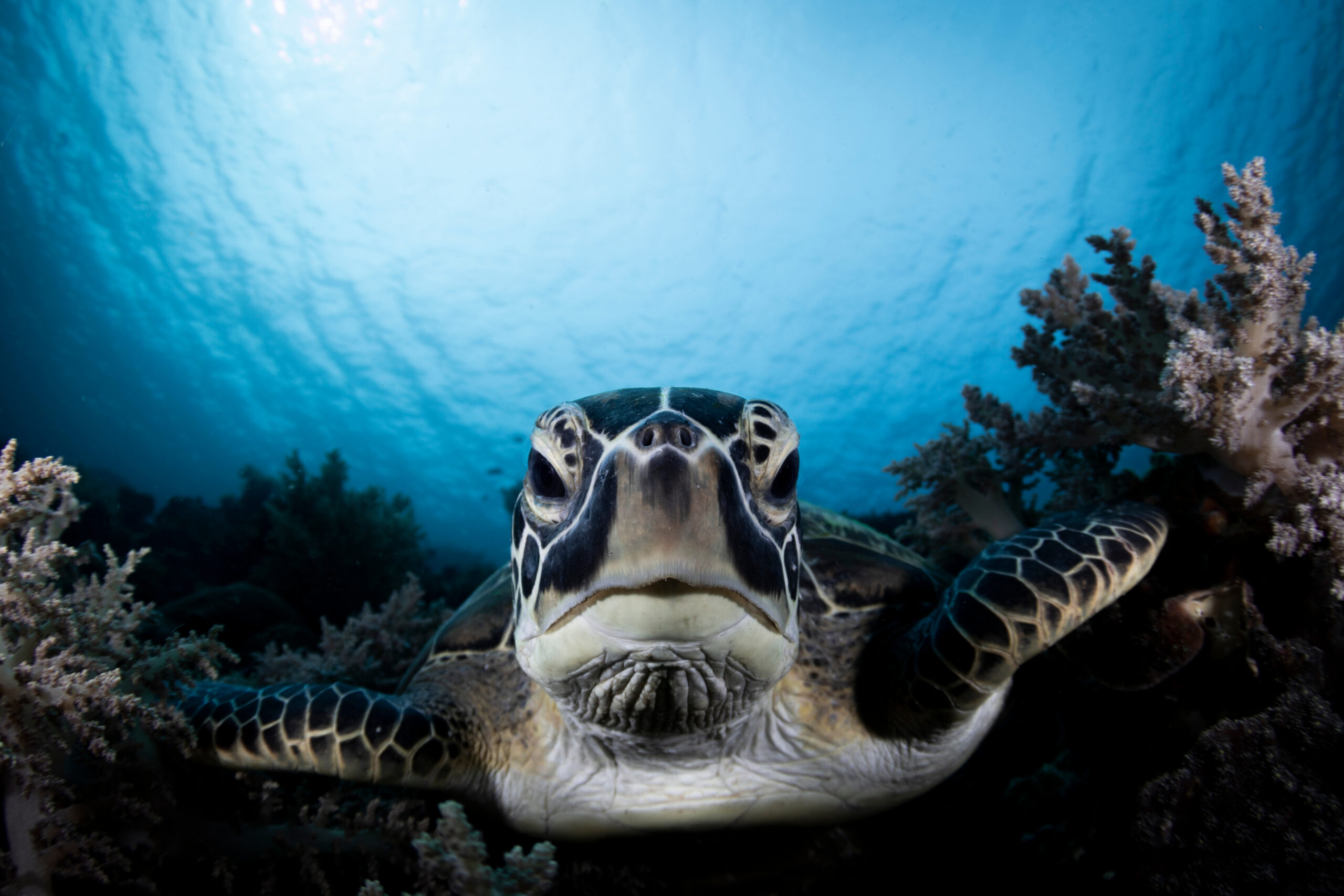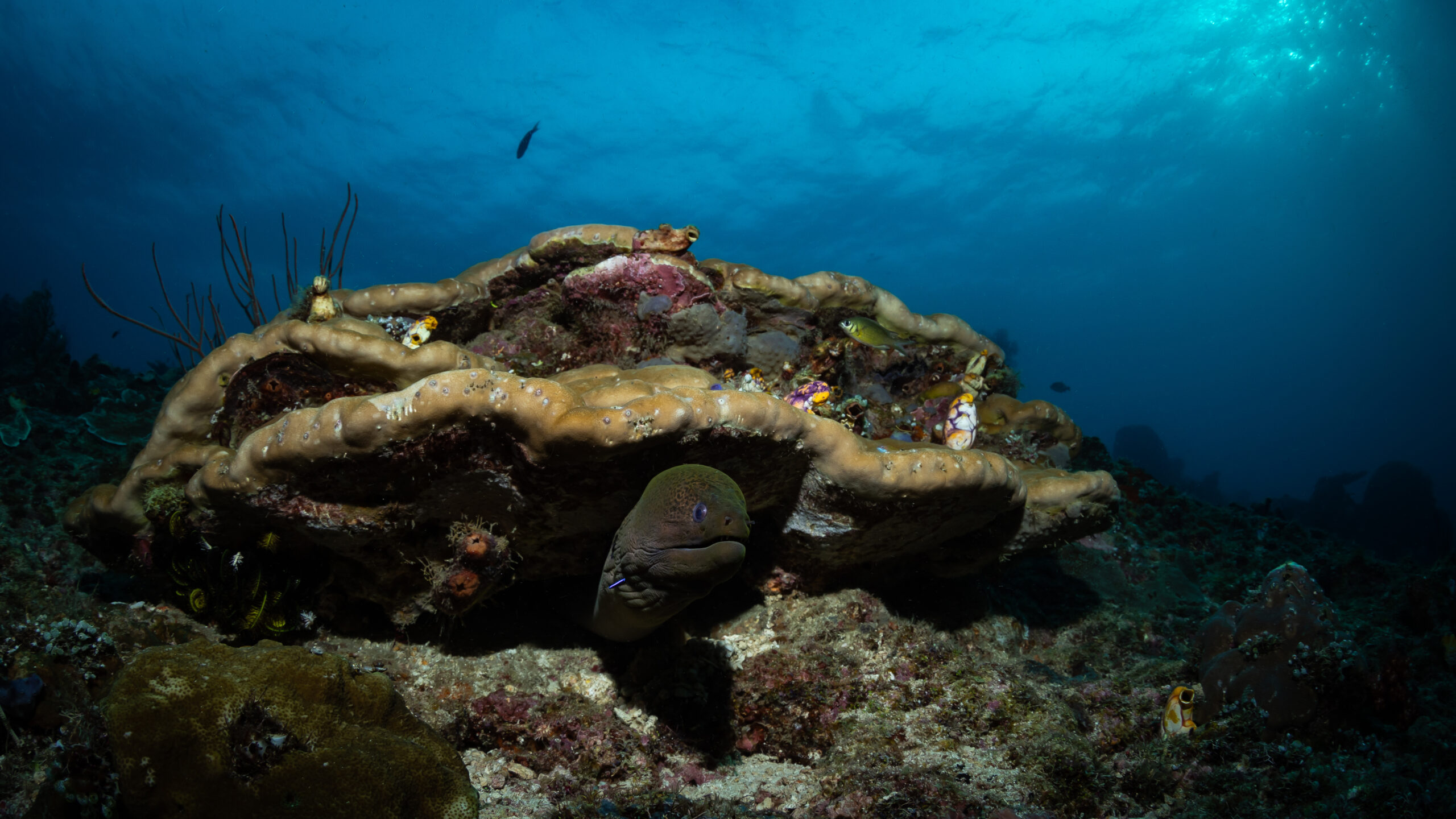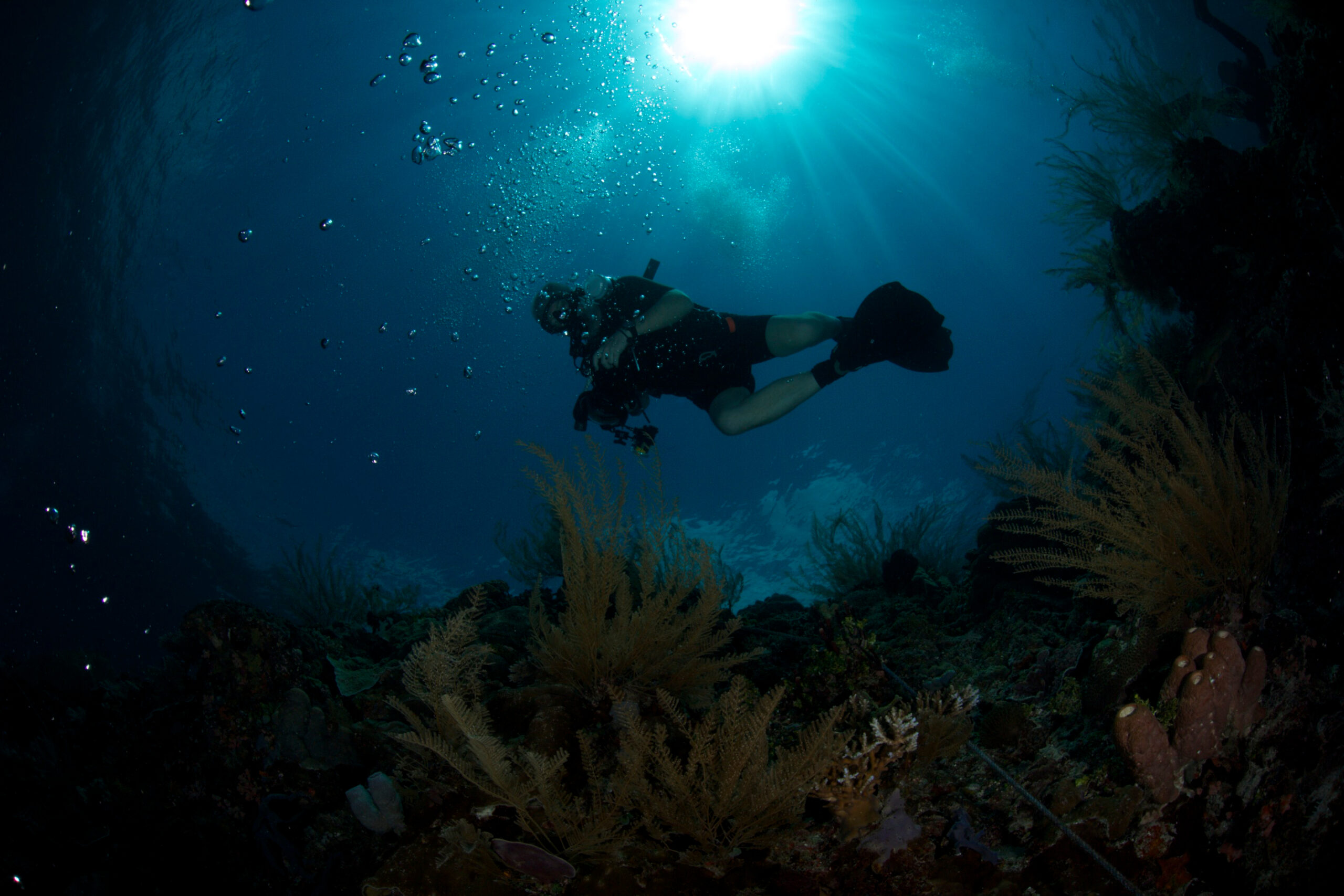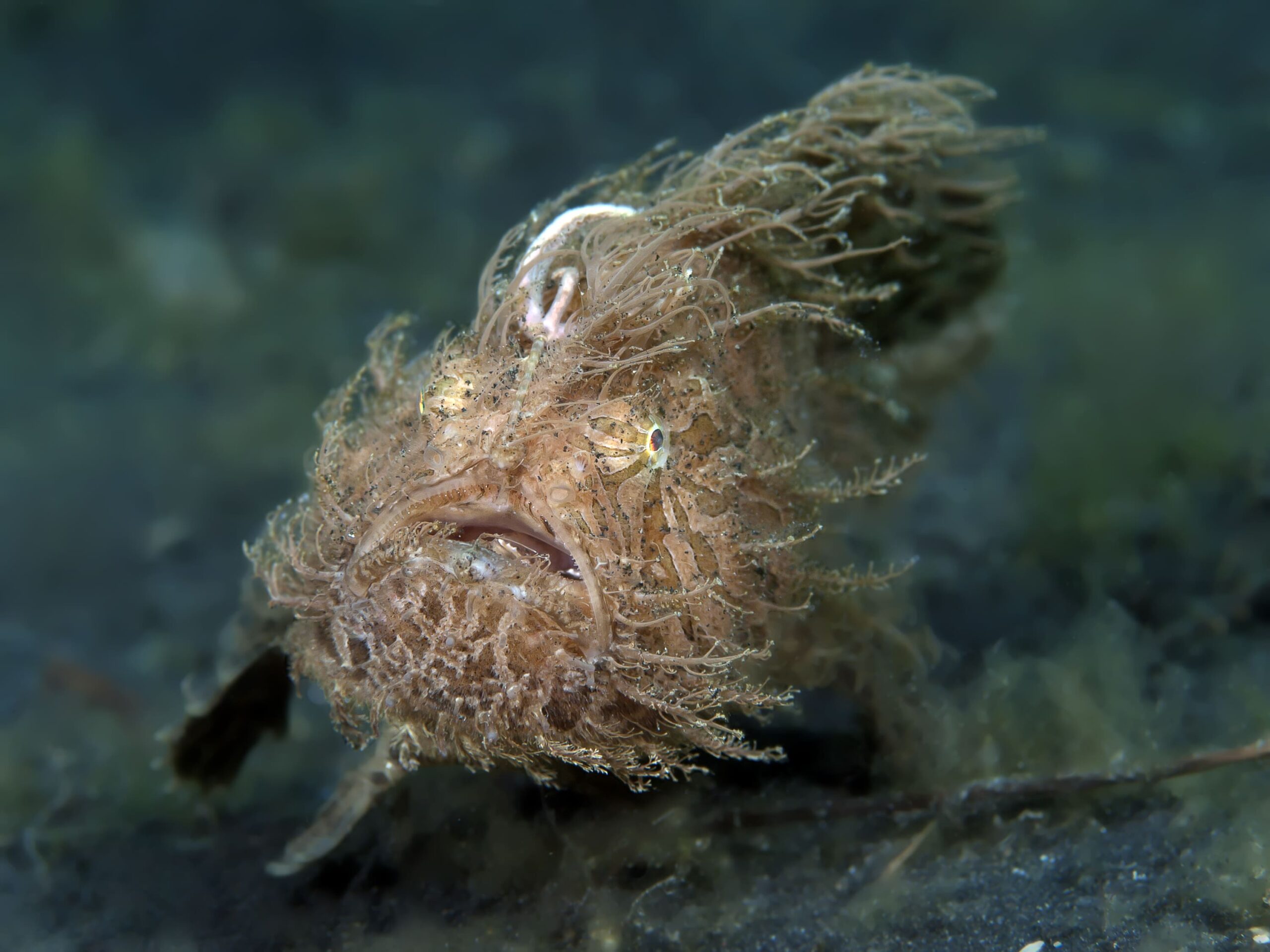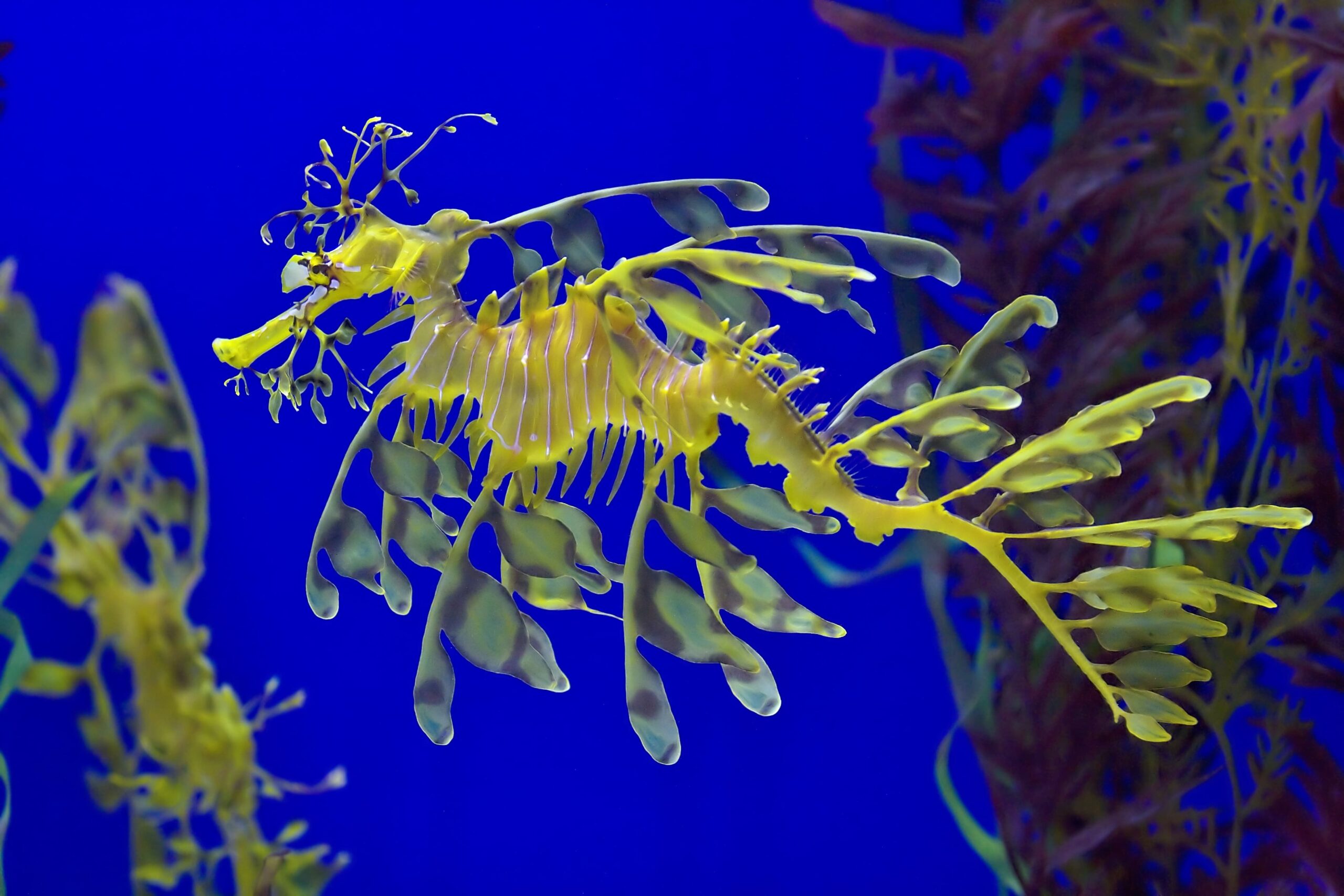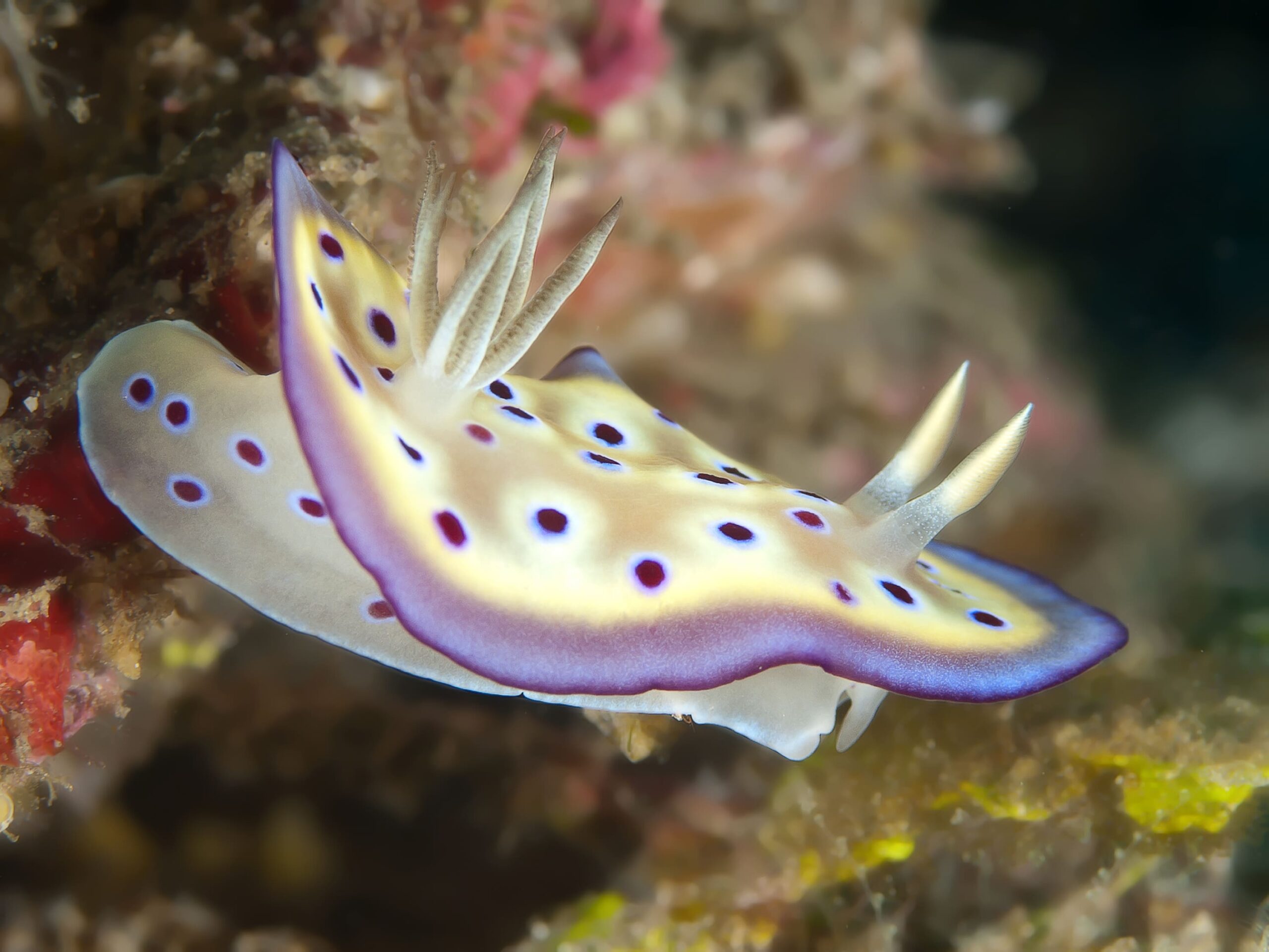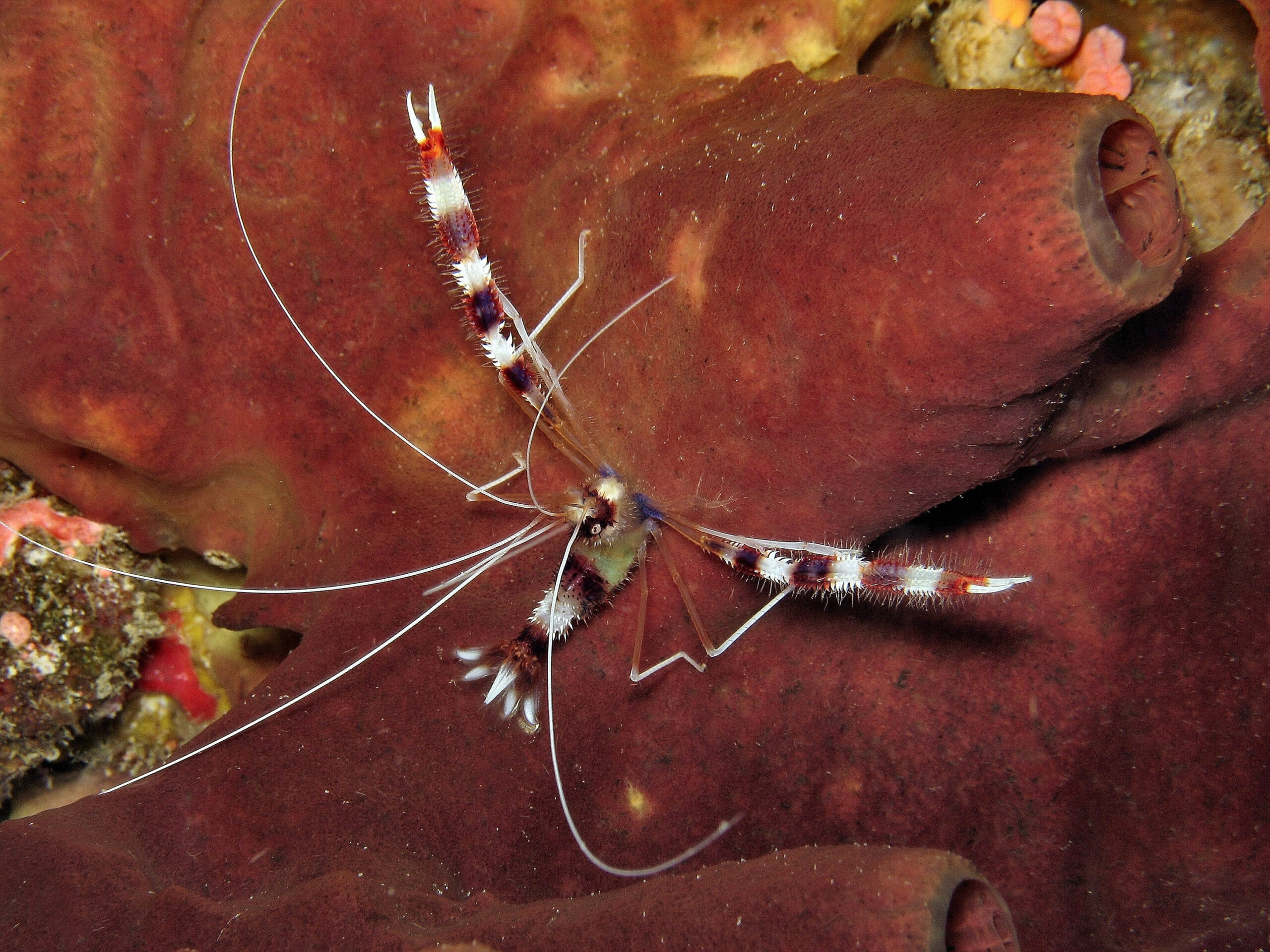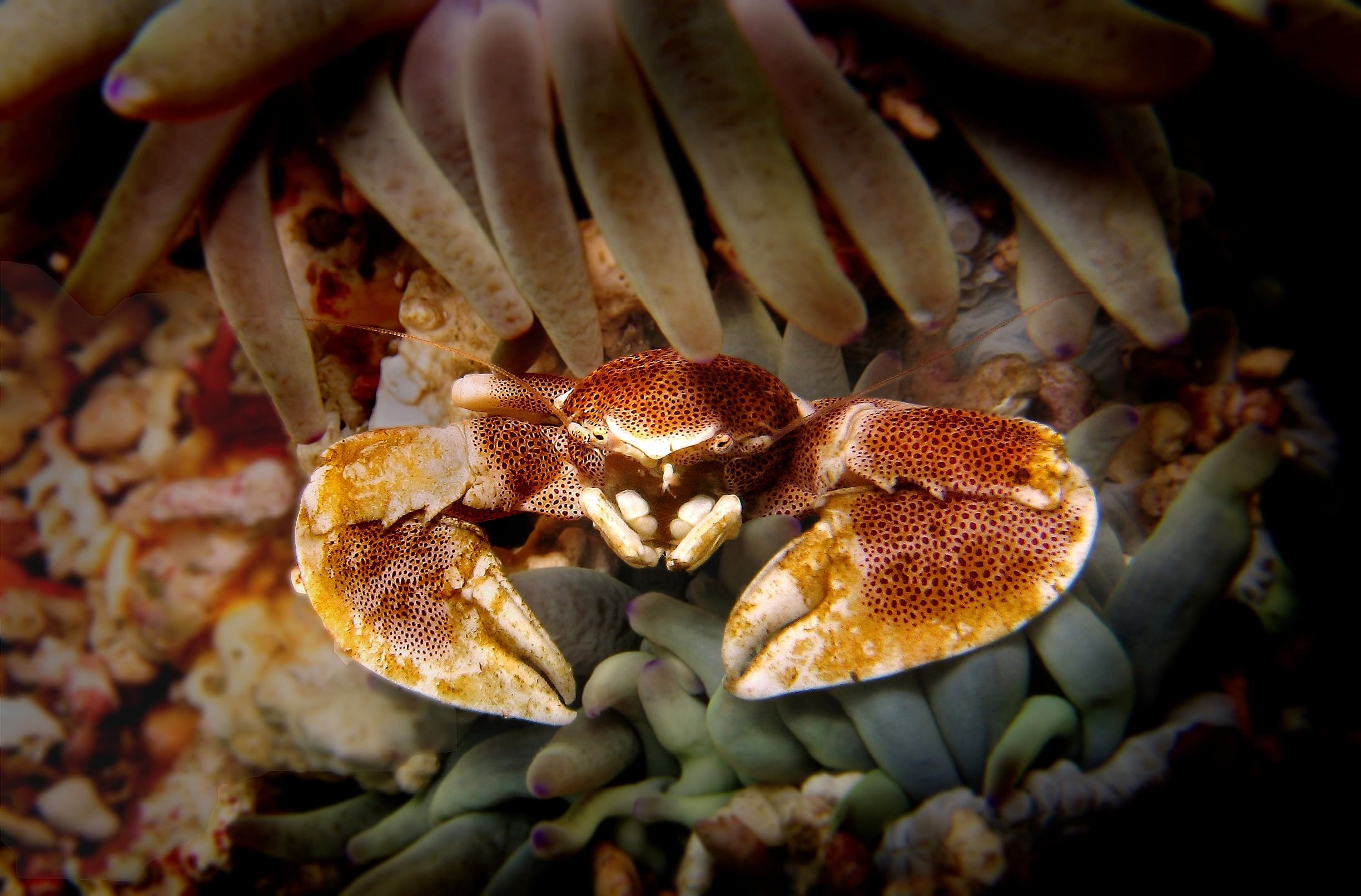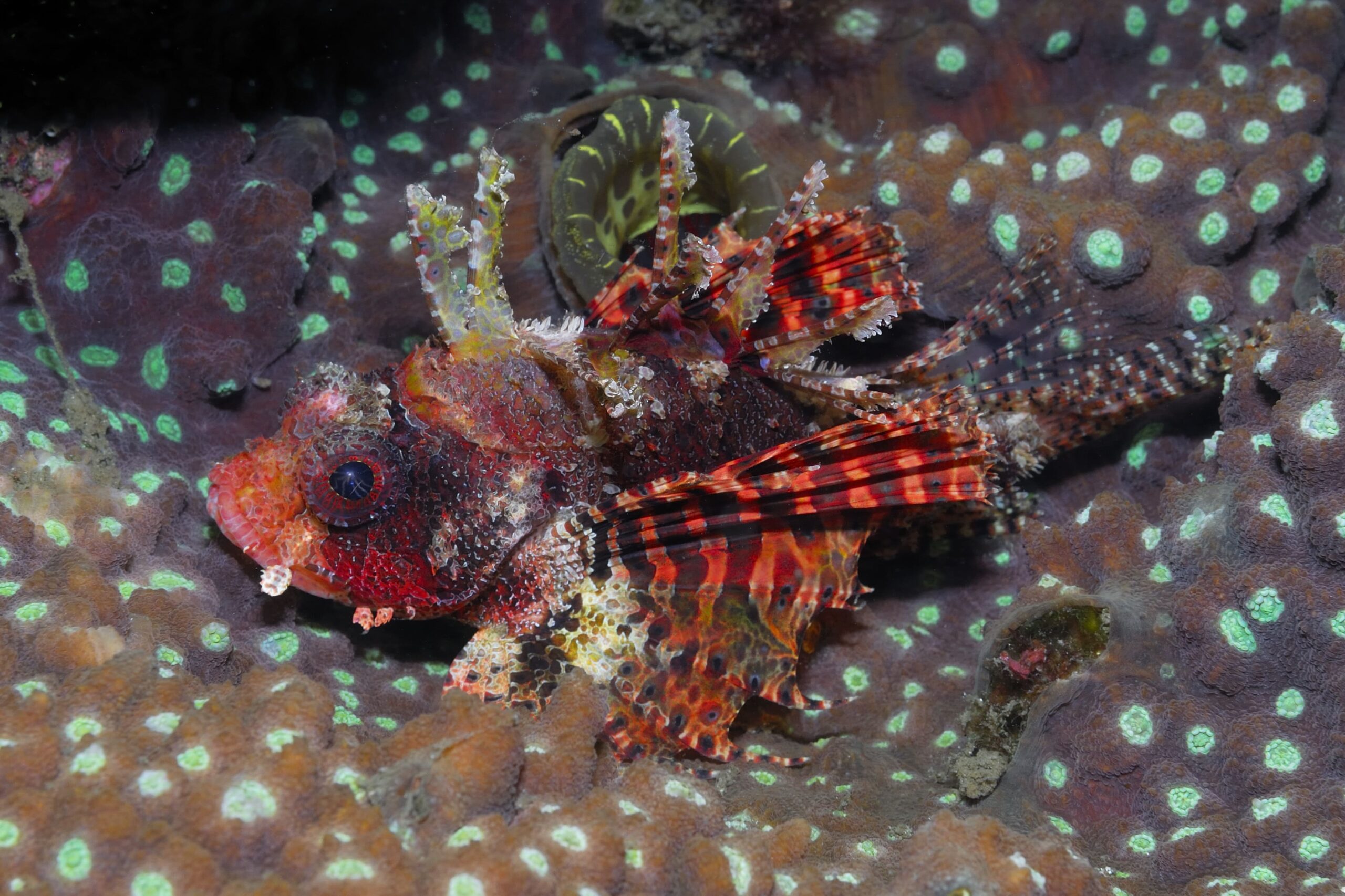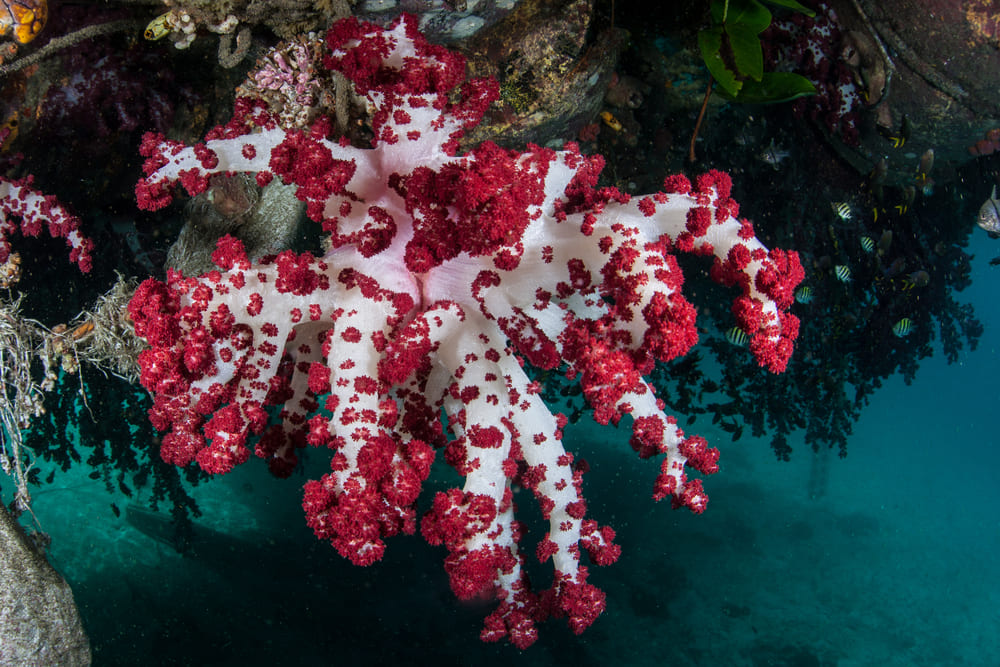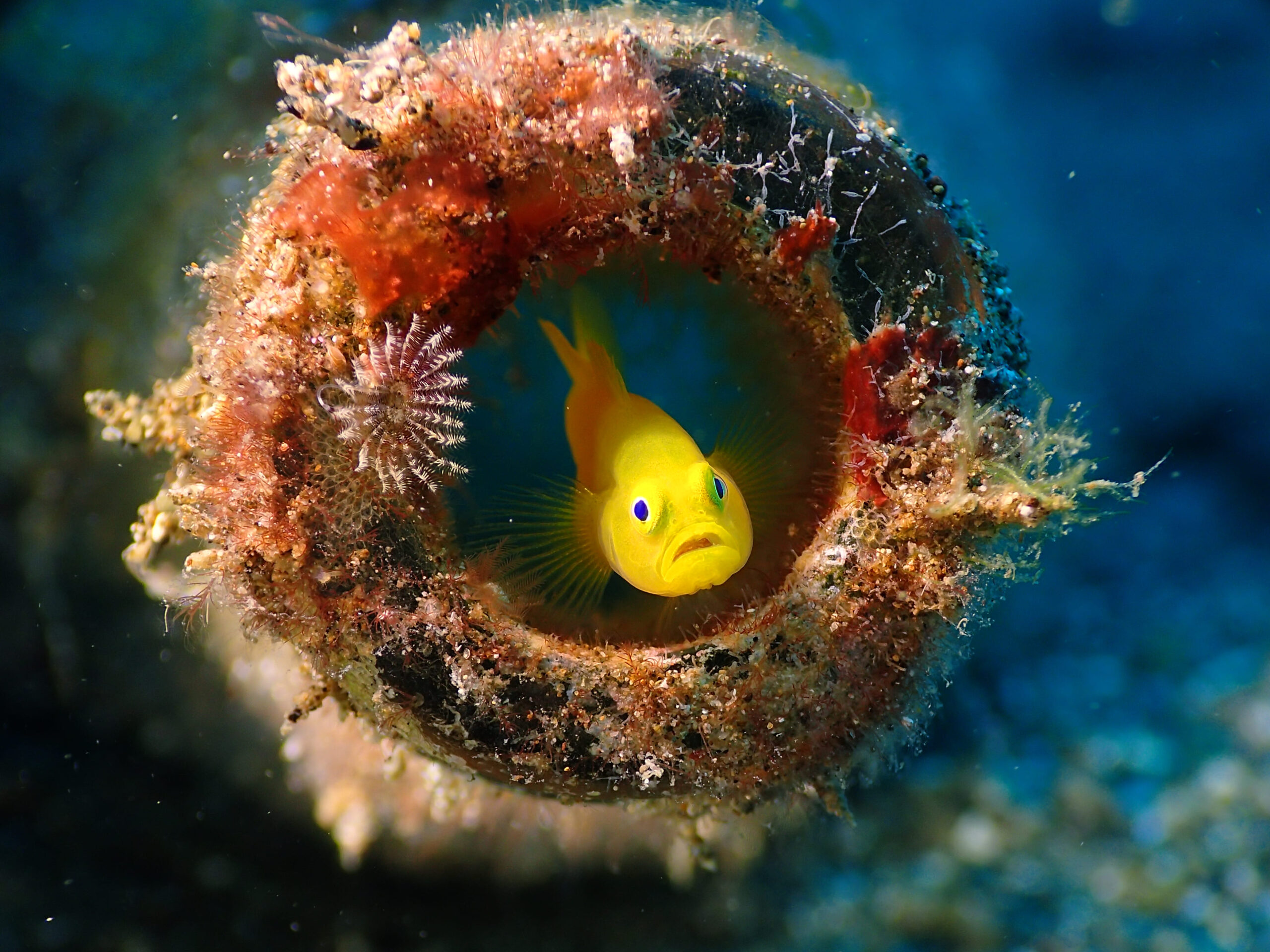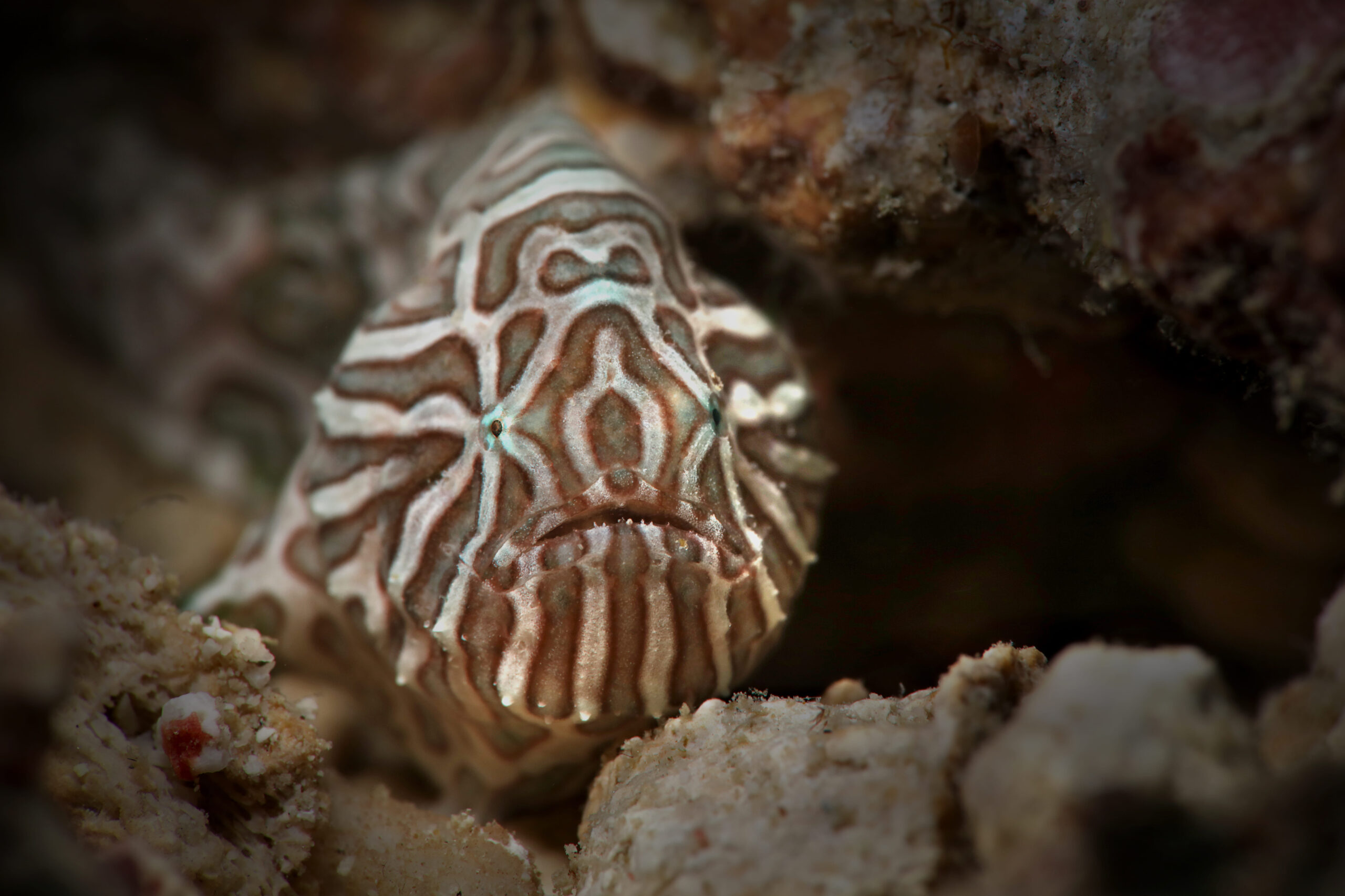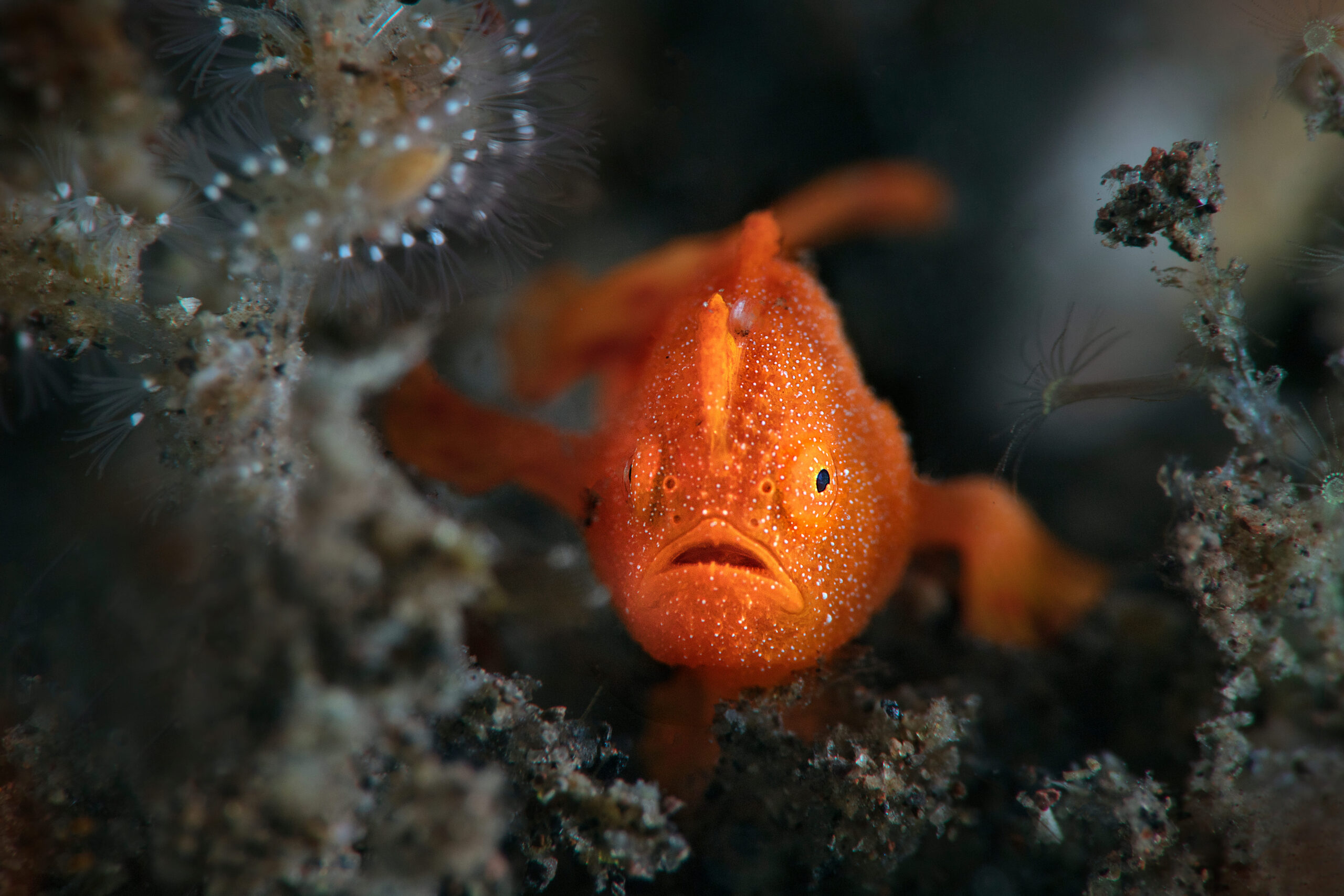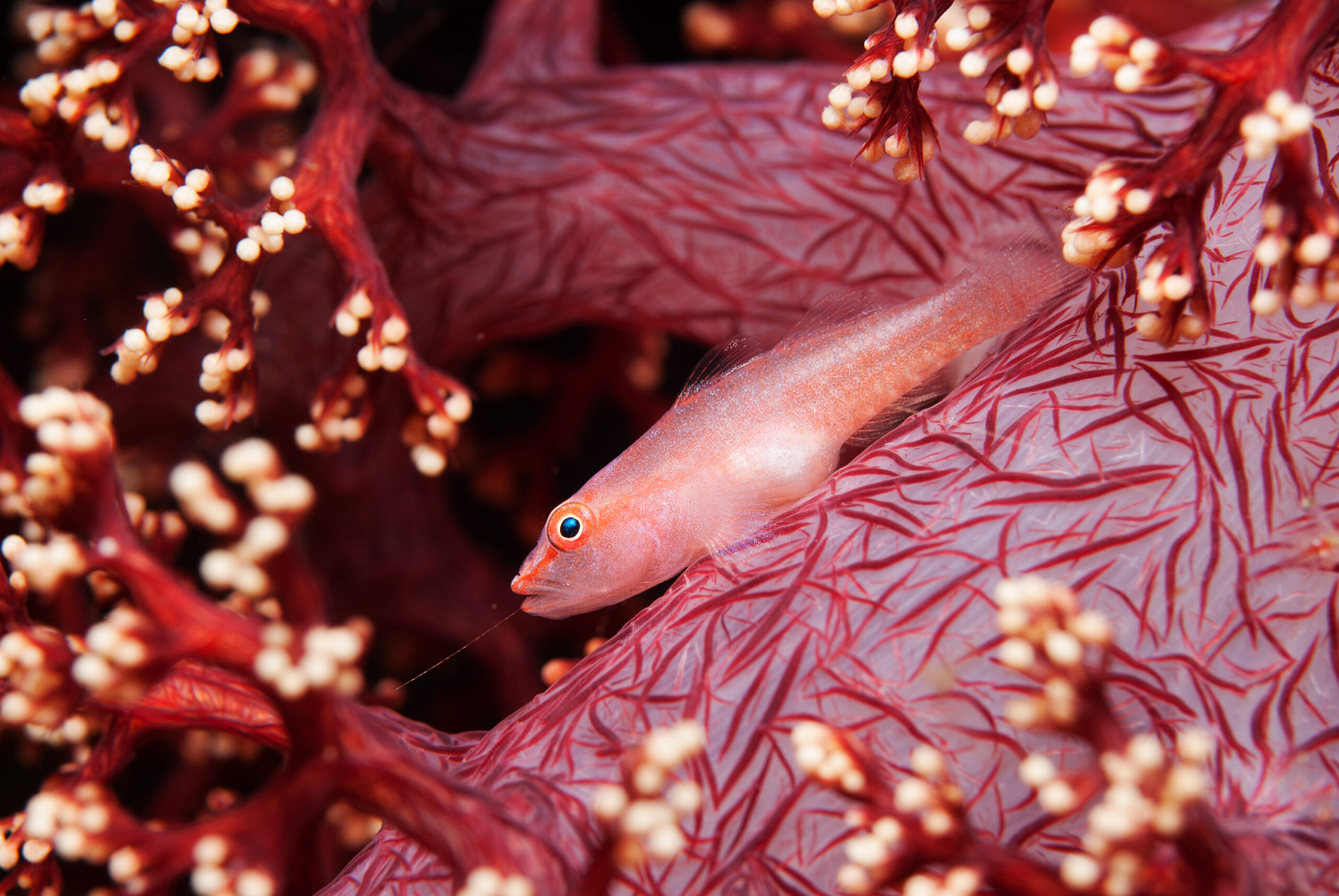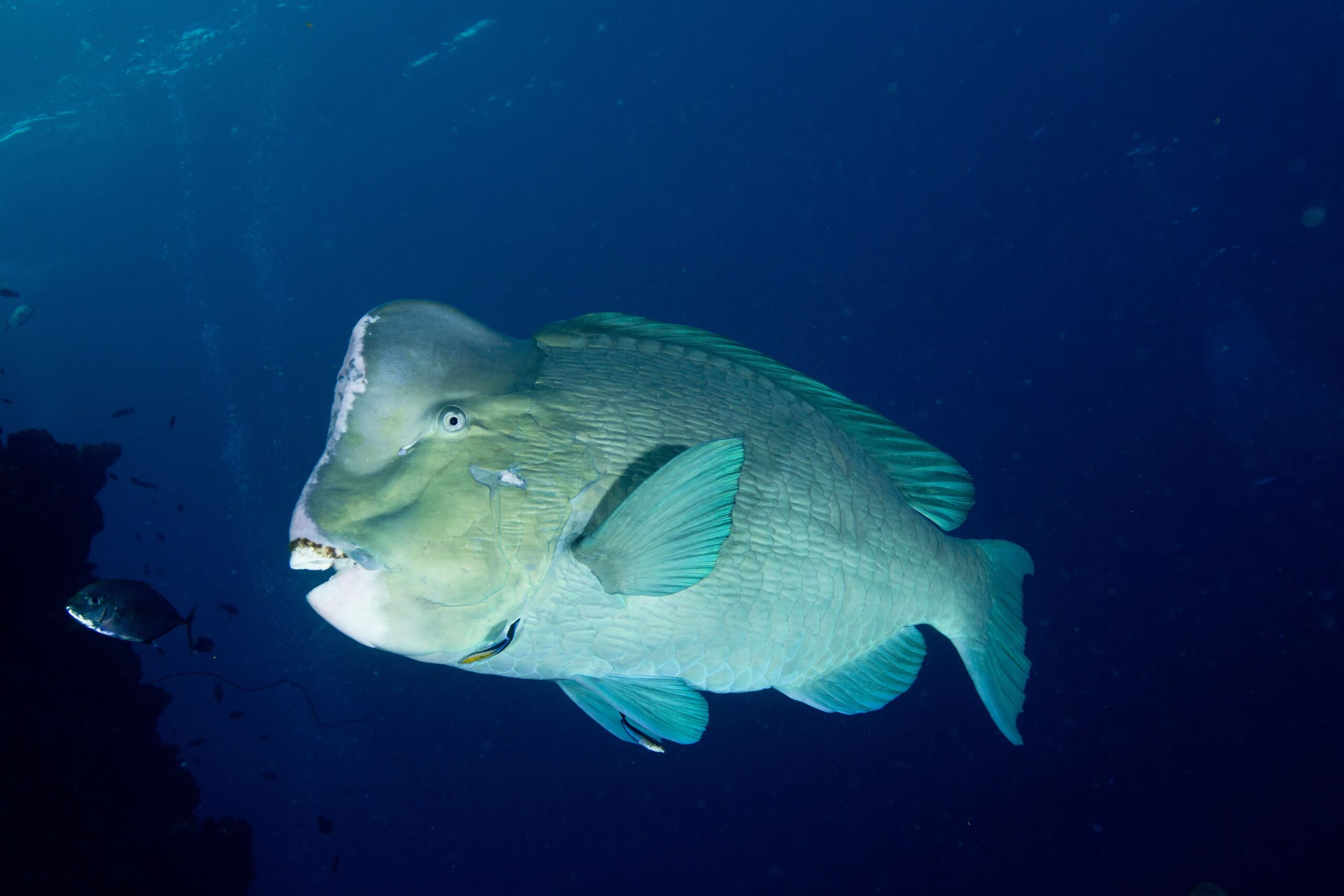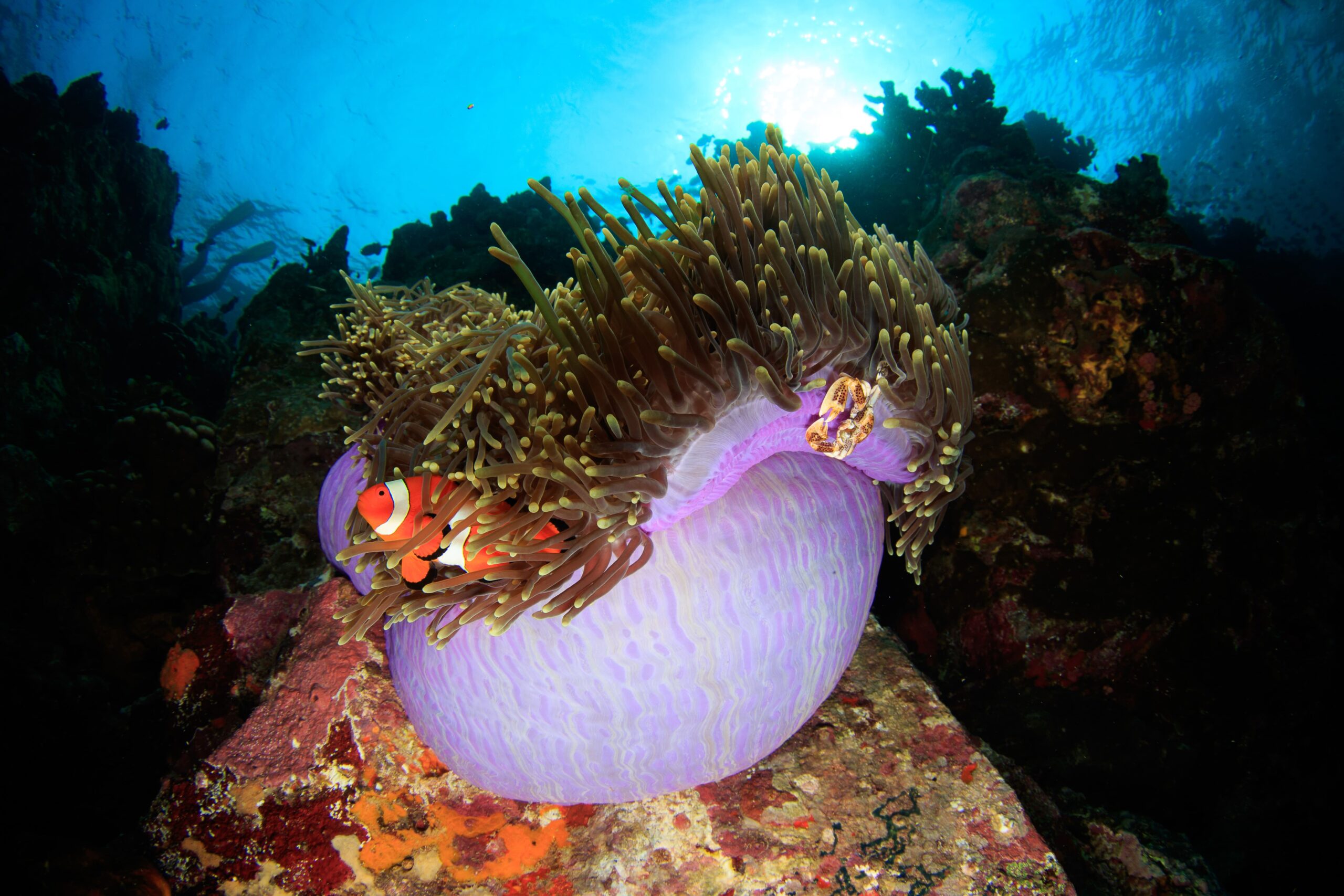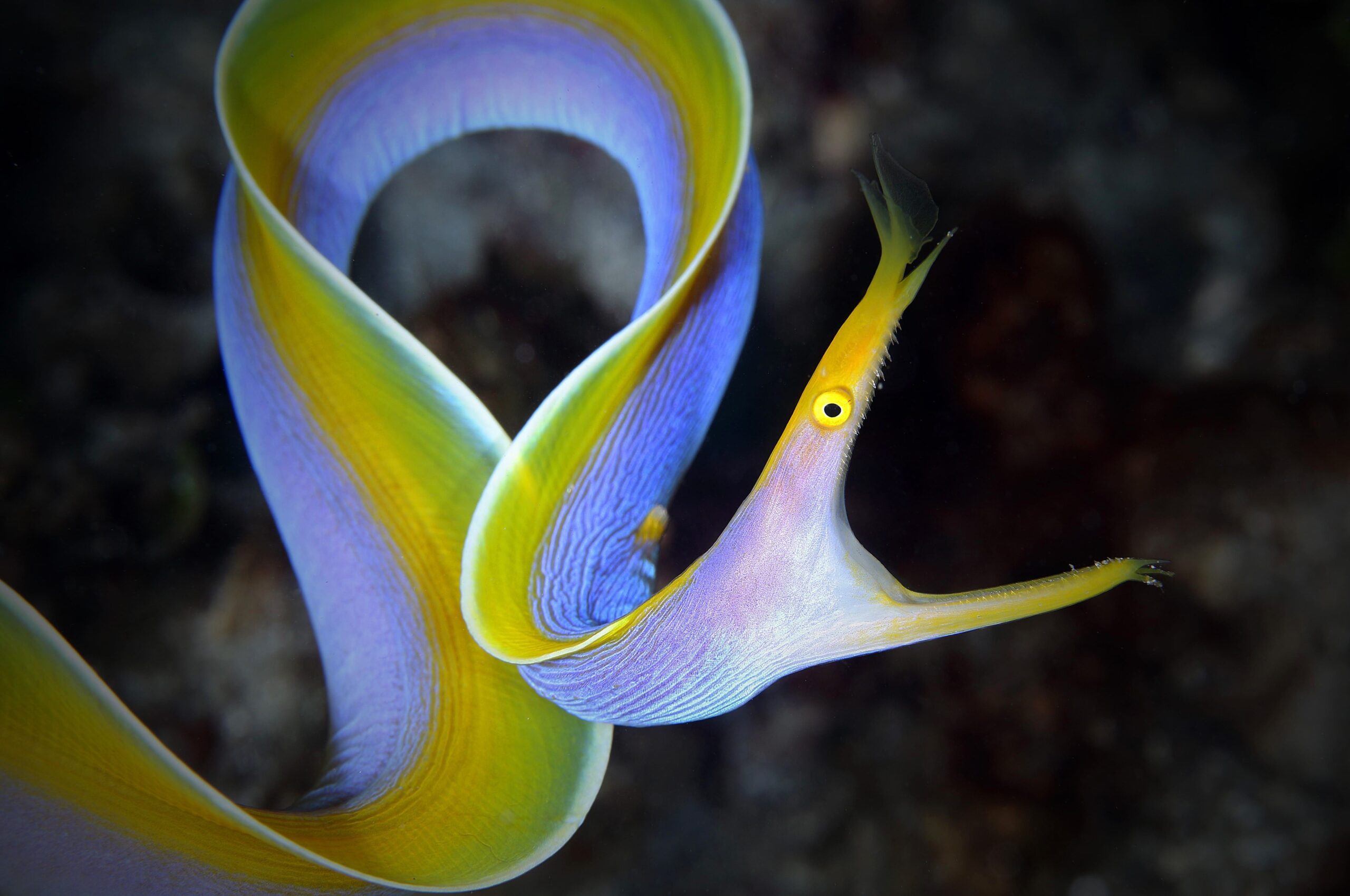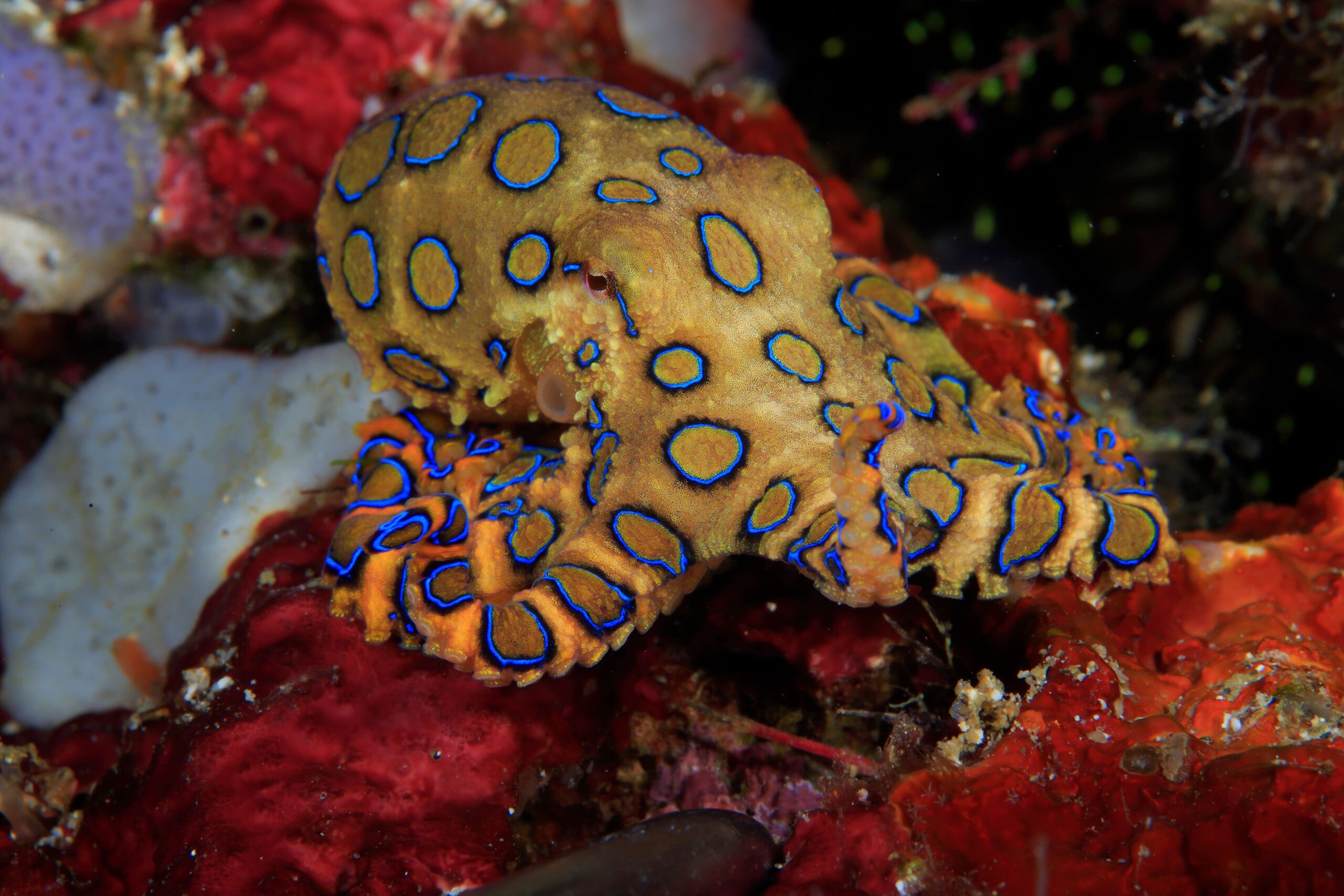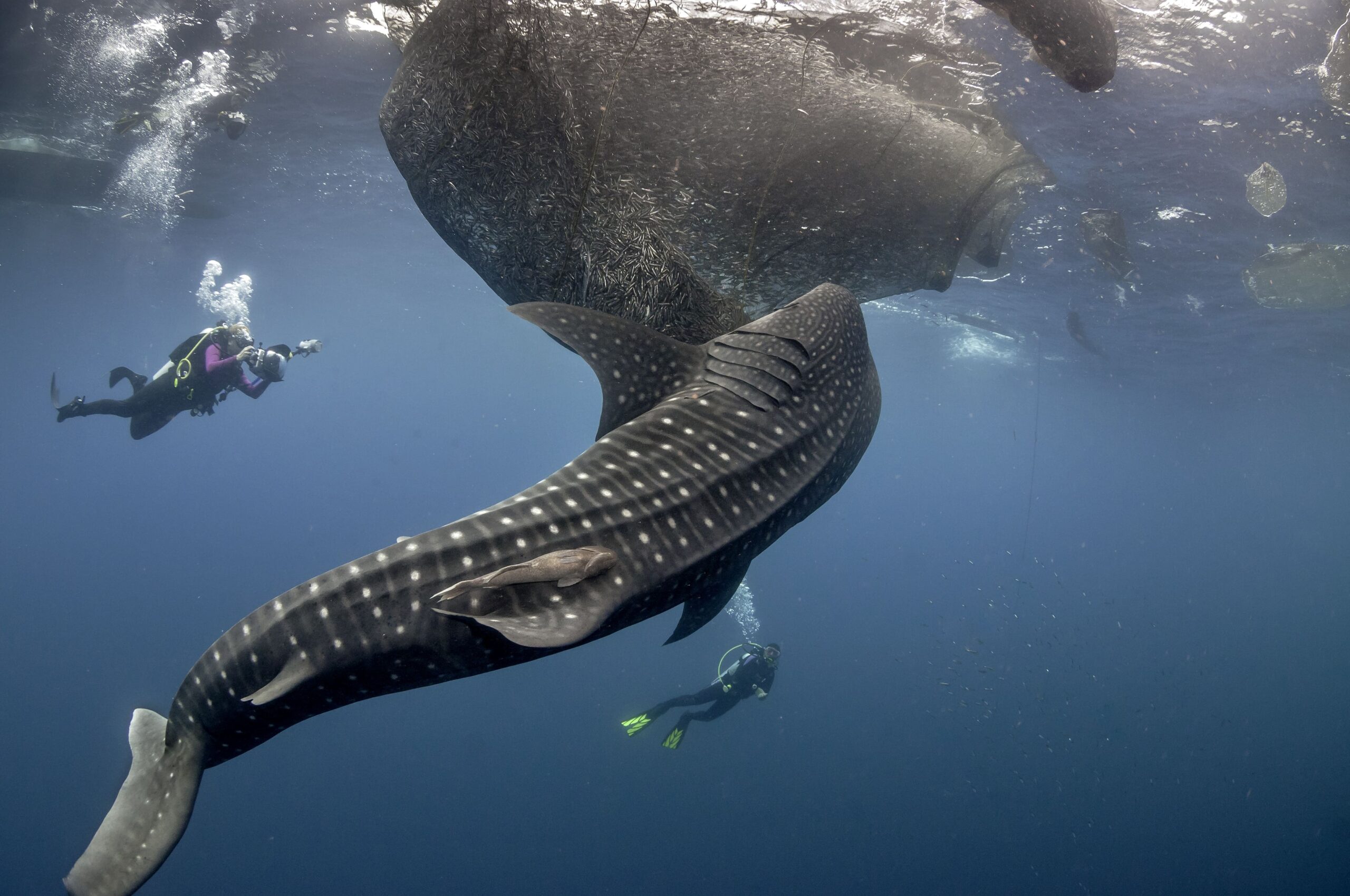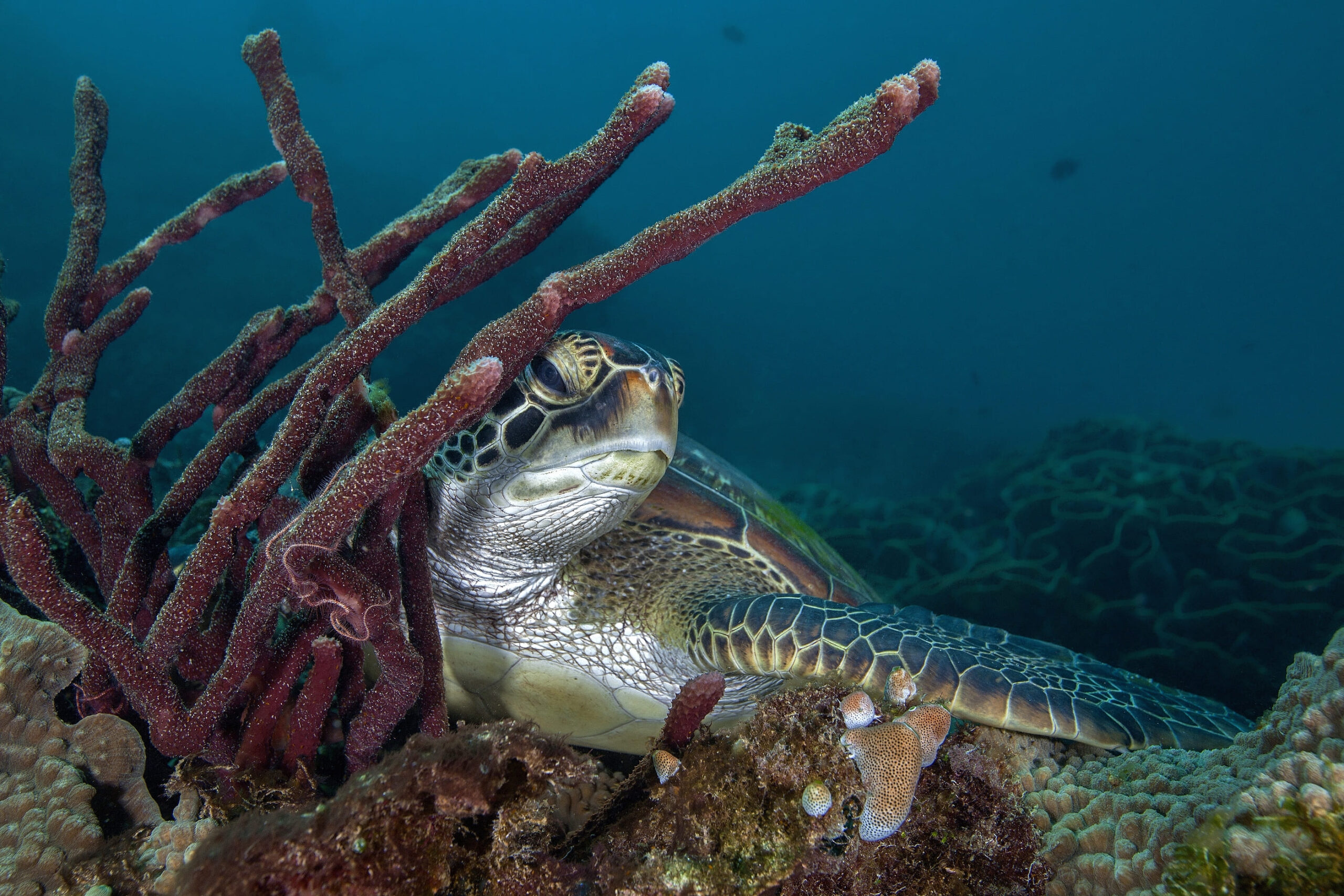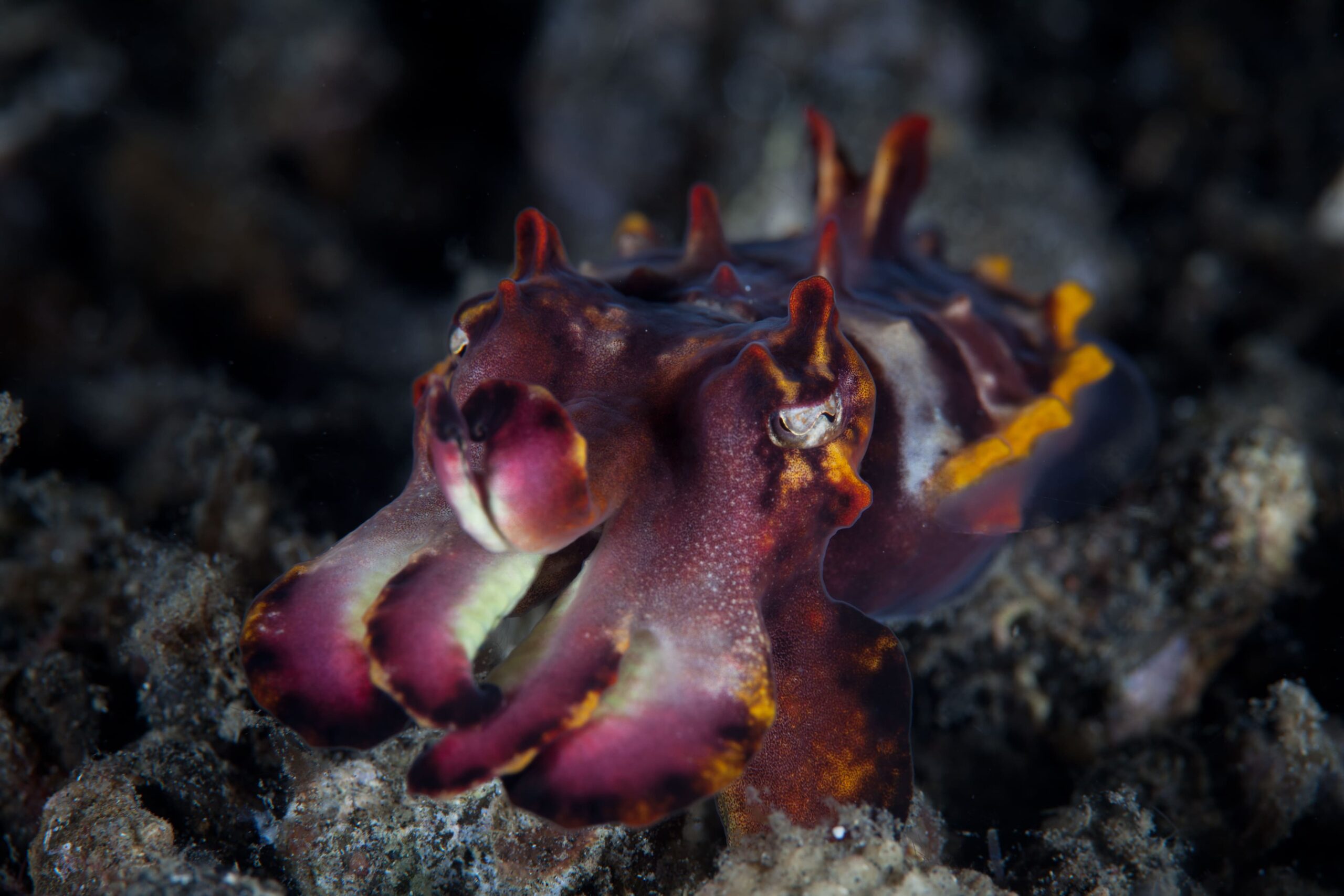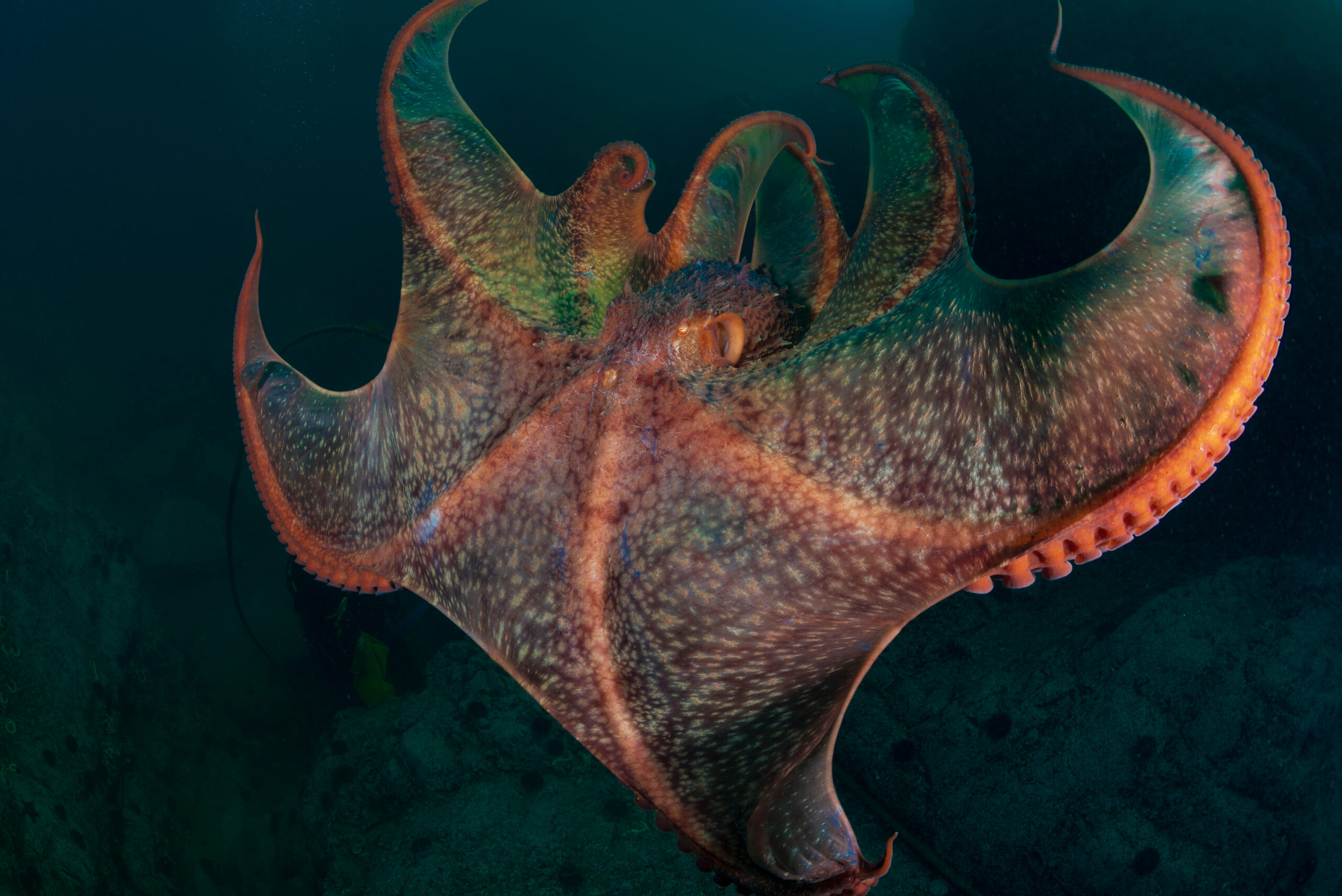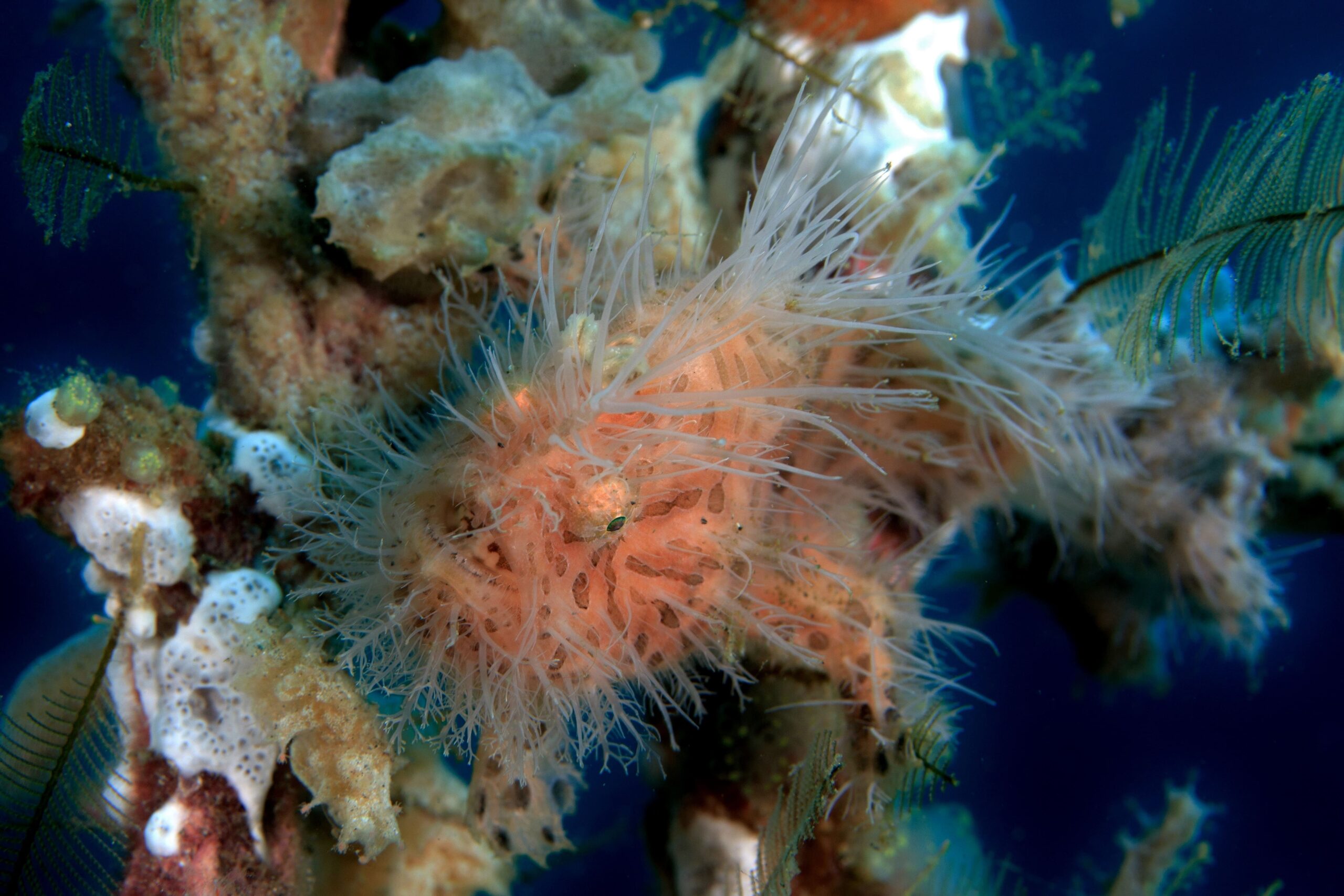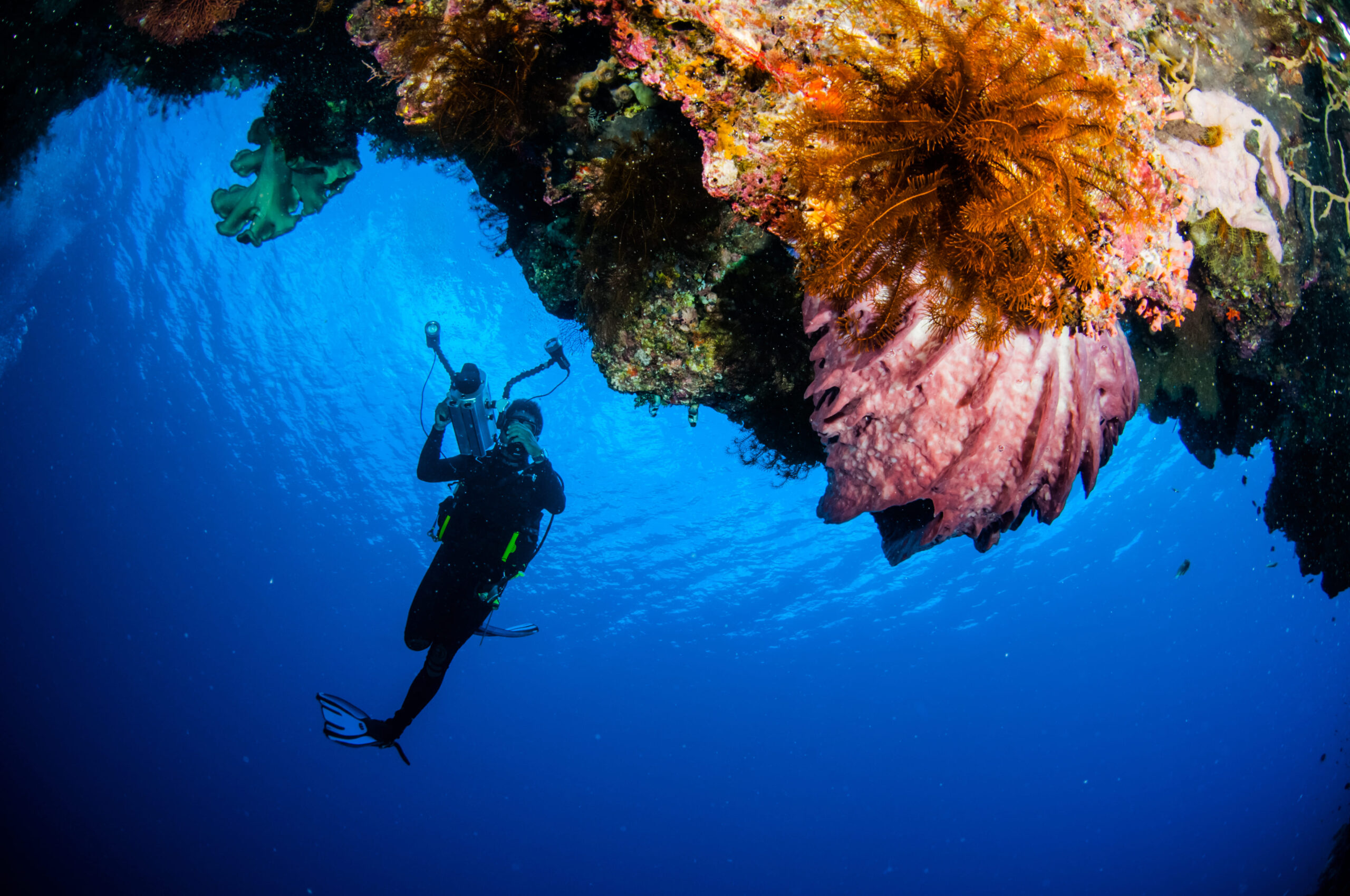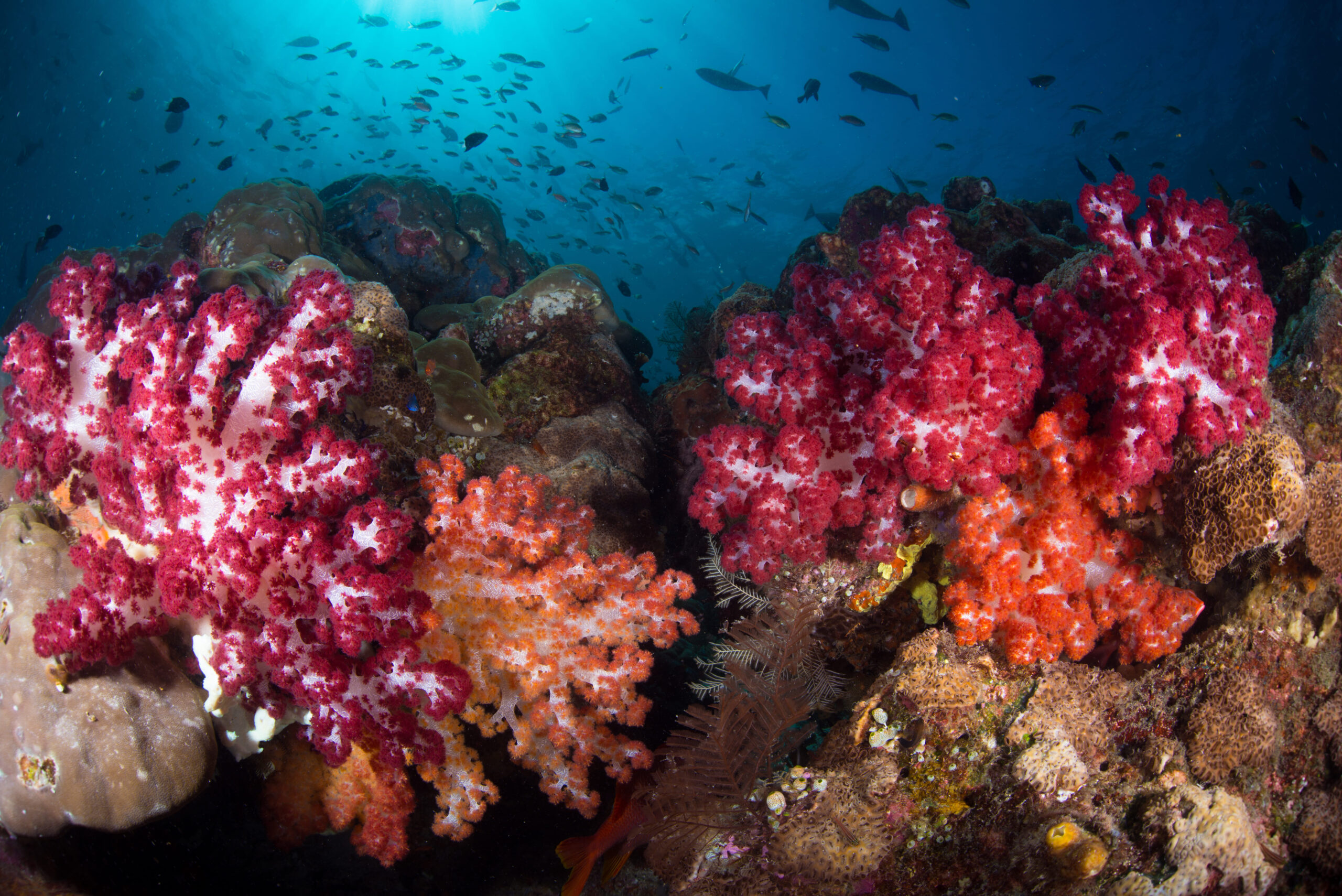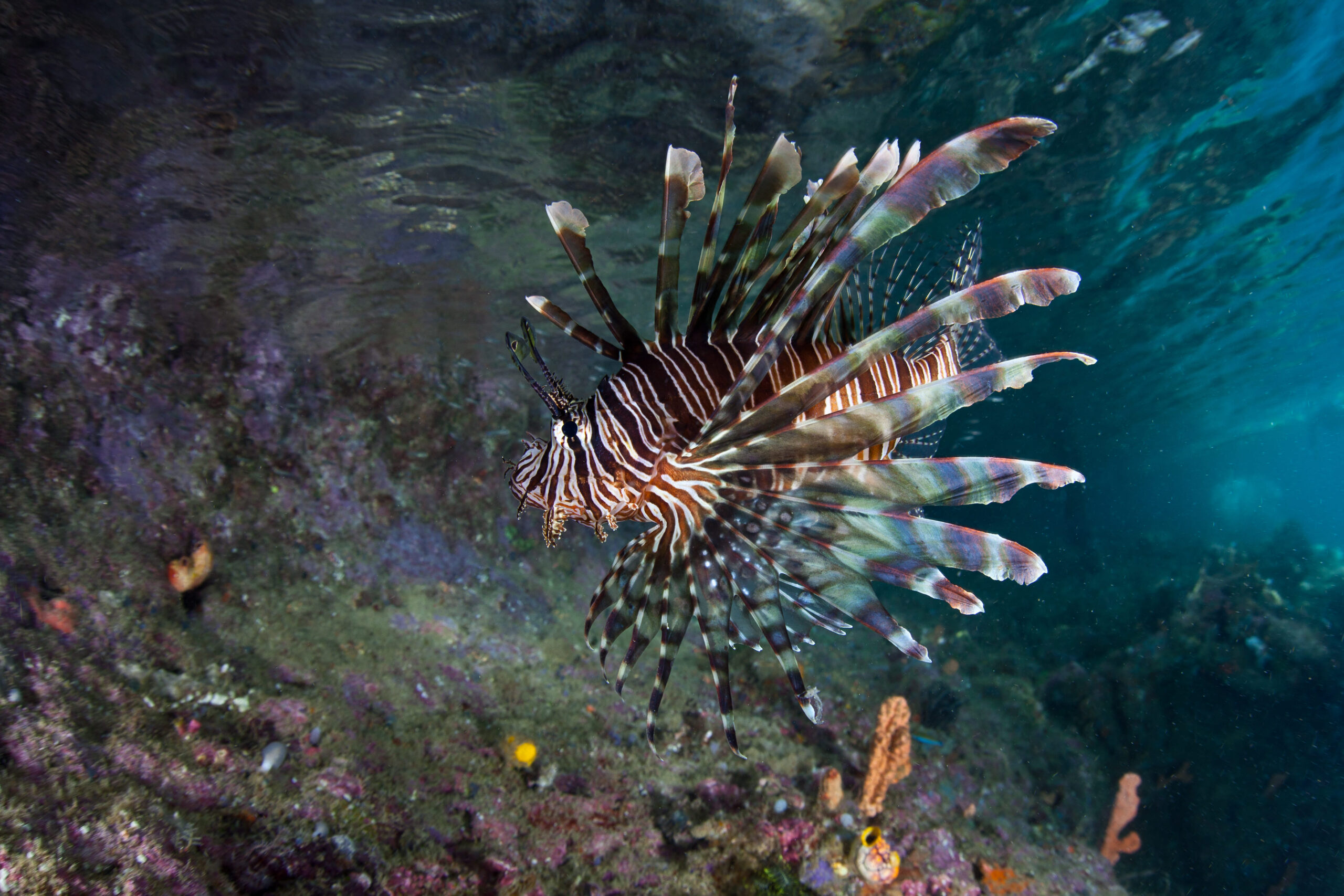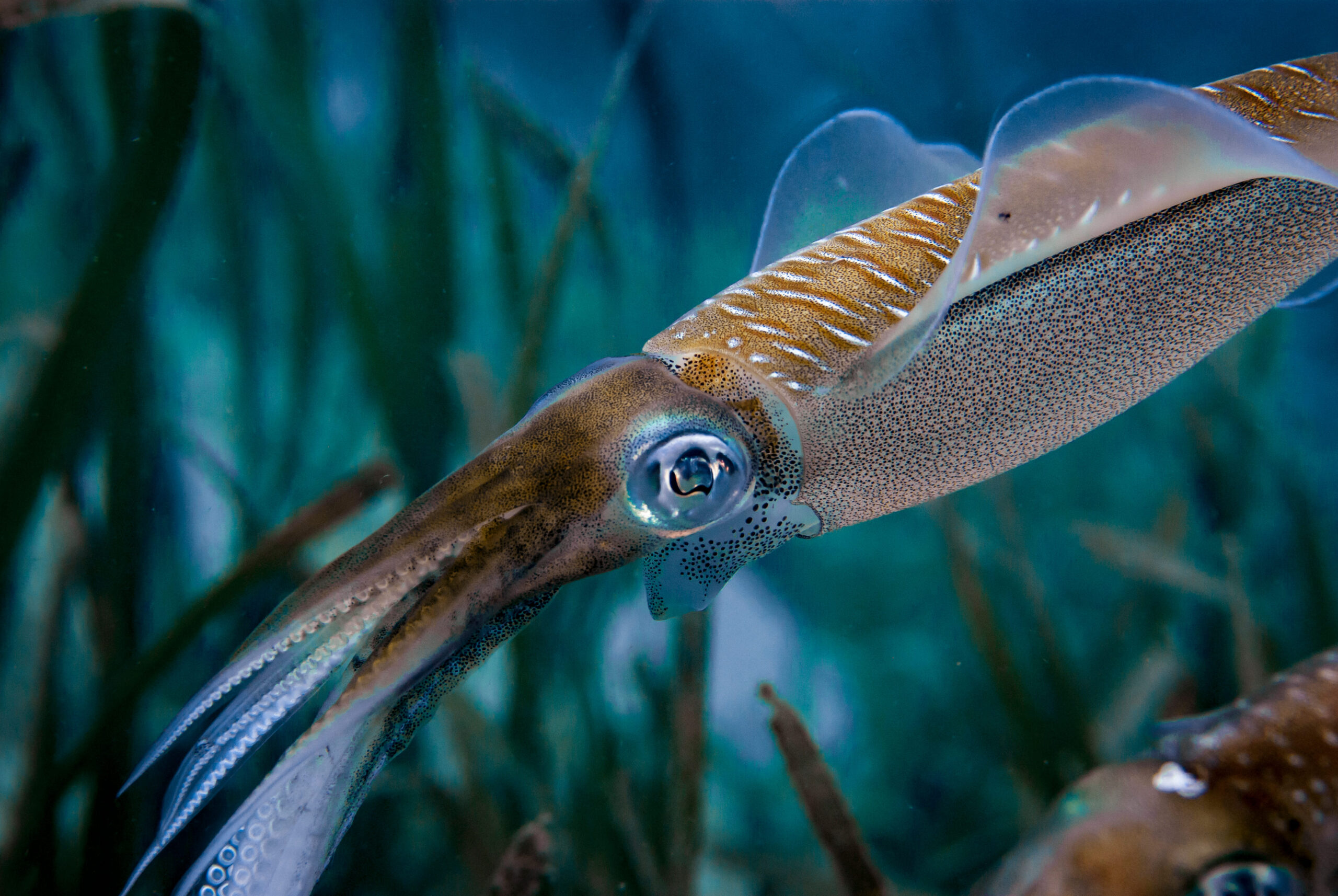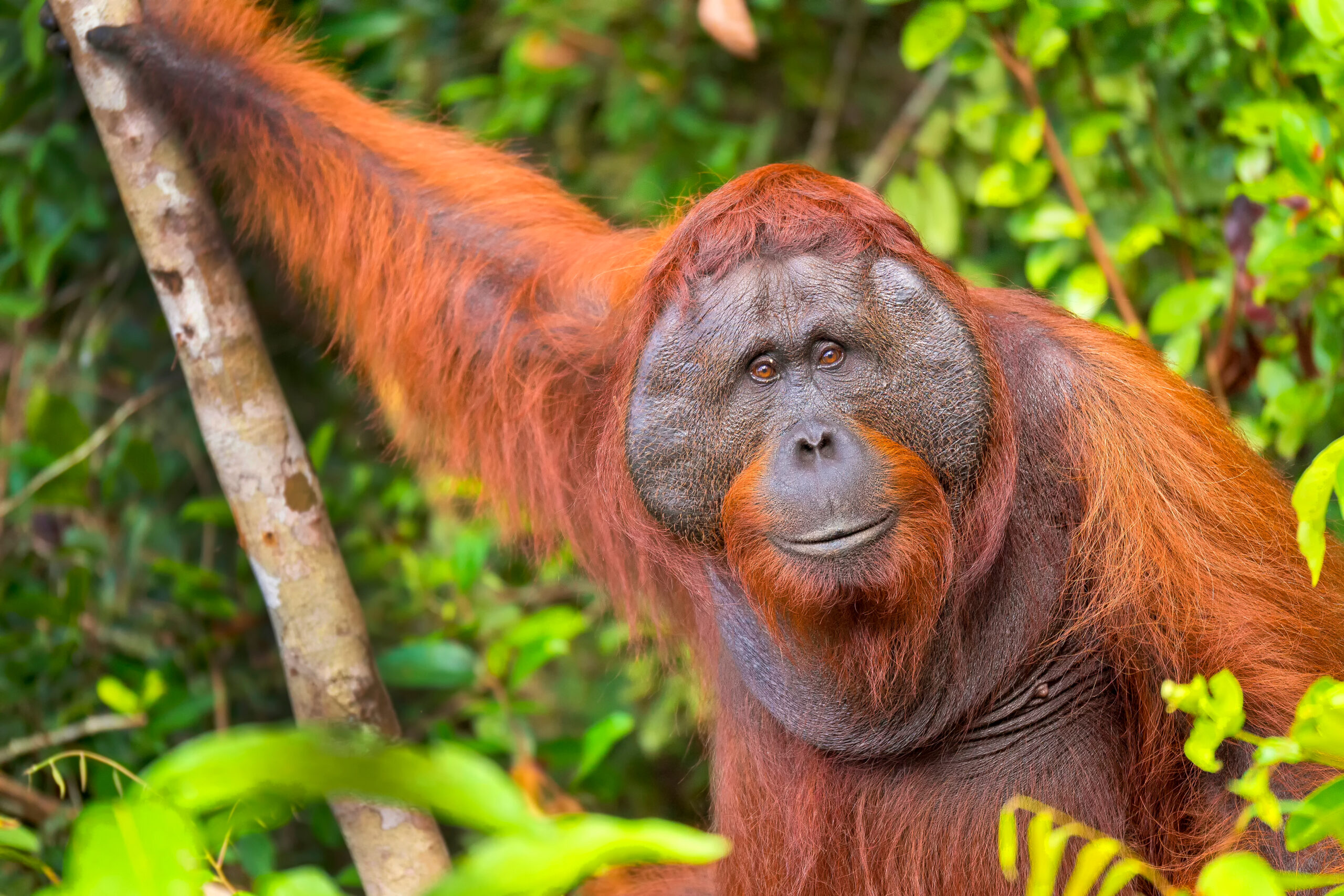First, Bunaken National Marine Park & Bangka Island, with their amazing steep coral walls, rich with a diversity of species, its huge sponges and beautiful hard corals, and countless critters.
Next, there’s the volcanic Sangihe archipelago, with amazing soft corals and critters + access to pelagics.
And finally, the undisputed critter capital of the world – the Lembeh Straits with its weird & wonderful species: stonefish, sea robins, stargazers, devil fish, weedy scorpion fish, ghost pipefish, the list goes on!
Wakatobi: If you love corals of all shapes and sizes, you will love Wakatobi. Although you’ll find far more than corals reefs, it is undoubtedly the profusion & magnificence of those which will create on imprint on your spirit. It’s a cornucopia of marine life abounding with color & excitement.
Of course, with the corals, come reef fish and tiny creatures which call the reefs their home. And, needless to say, where there are reef fish, you always find some of the bigger guys in the food chain including sharks, rays, tuna, Napoleon wrasses, barracudas and plenty of turtles … so wide-angle photographers don’t despair !
You have great topography … slopes, steep walls, overhangs, caverns, shallow coral gardens, sandy bays, ridges, sea mounts, crevasses & plateaus … and some lovely drift diving.
You will be greeted by spectacular gorgonians, huge & lovely table corals, potato coral, lettuce coral, leather coral, colorful crinoids, sponges & pervasive whip corals.
Schooling fish include the small guys (cardinalfish, soldierfish, cometfish, sweepers) and the next step up (batfish, fusililers, butterfly fish, snappers, triggerfish, batfish & sergeant majors). The critter population, features scorpionfish, leaf fish, ribbon eels & garden eels, pipefish, blennies, mantis shrimp, pygmy seahorses.
To top it all of, the land itself holds cultural fascinations galore & beauty beyond the imagination.
